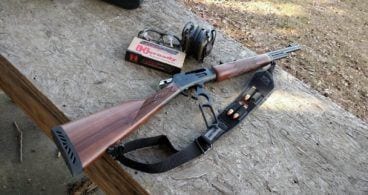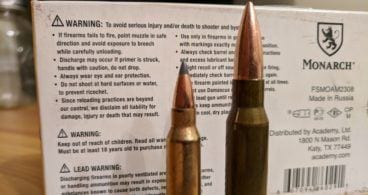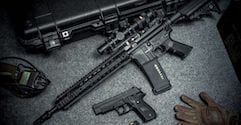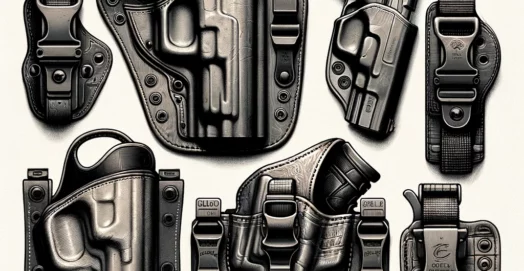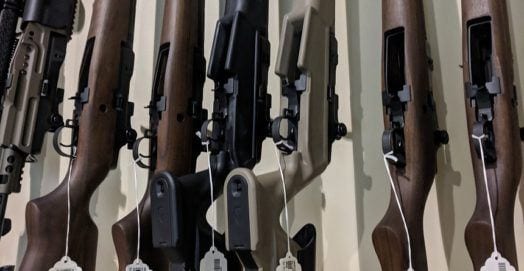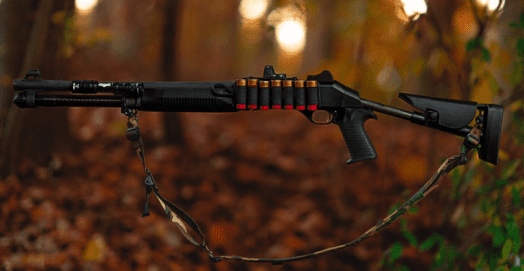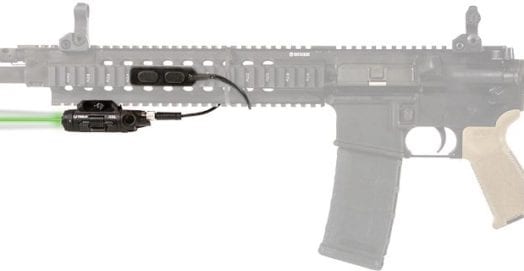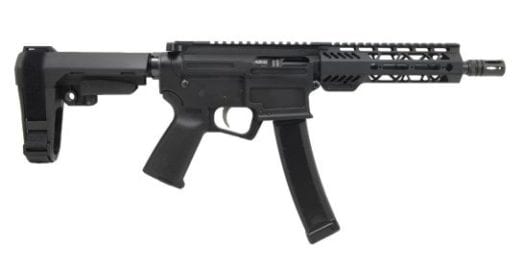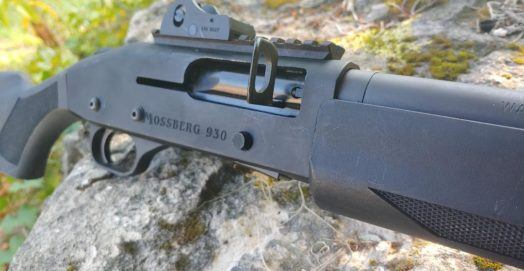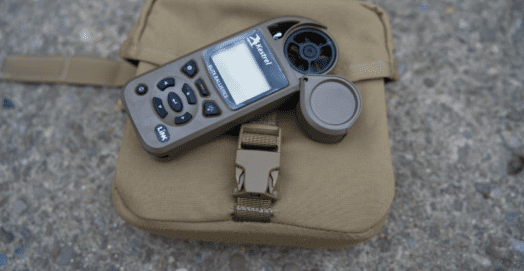Complete Guide: Best AR-15 Triggers [Upgrade Your Rifle!]

AR-15 Triggers
If you’re a guitar player, one of the first things you may want to upgrade on your electric guitar is the pickups. While they’re small parts, relatively speaking, an upgrade can really improve the way an instrument sounds. The same can be said for an AR-15 trigger. A modest investment can make a big difference in the way the gun shoots—and a big investment can change everything.
If you’re building your own AR, as I’m assuming you are, you can throw in a bog-standard AR-15 trigger from a parts kit and it won’t cost much. It will work fine. Maybe not great–but fine. Or you can go for broke and spend more on a trigger than you did on the upper and the lower and the barrel, too.
(At the most basic level, a trigger is going to be really rough. But it will work.)
The AR-15 trigger, like some other parts of the gun, requires that you do your part, too. If you are capable, a good trigger will change the way you shoot.
Let’s define the terms.
Contents
Trigger
The visible part of the trigger is actually the trigger shoe. There are numerous different shapes to trigger shoes. Some of them are flat and wide, others are straight or curved. Some have coatings that give them some color. Others have coatings that give them competitive advantages.
Above the shoe, but on the same piece of steel (usually) is a longer rectangular bar. This is a simple machine. It is a lever. When you apply force to the trigger shoe, it transfers through this bar to the seer where the inertia is overcome.
Some trigger shoes have a slight texture to them, like grooves lines, but most are smooth.
There are two main types of triggers.
The Single Stage AR-15 Trigger
There’s no real mystery here about how the single-stage works. There are just a few moving parts. The seer face is the area of friction that connects the hammer to the trigger. When you pull the trigger back, the two pieces of steel slip and the hammer falls.
If the gun fires, the bolt carrier rockets back, and the hammer is driven back into position. If you are still holding the trigger back, the disconnector will catch the hammer. As you let off the pressure, the trigger moves back into place and will catch the hammer as it drops off of the disconnector. Now the trigger is reset and ready to fire again.

(A single-stage trigger hidden in a kit from Aero Precision.)
If my description of this is confusing (and I have not read many explanations of the process that aren’t), I’d suggest you check YouTube. There are cut-away demos online that are very easy to follow, even without words.
I think of it like this. There are three pieces of steel: the trigger, the hammer, and the disconnector. The trigger releases the hammer. The hammer does its thing and comes back to the disconnector. The disconnector catches the hammer and hands it back to the trigger.
The Two-Stage AR-15 Trigger
This one is far more complicated, as there are two distinct movements and more moving parts above the actual trigger.
The first way to know if you have a two-stage trigger is to (safely) dry fire the gun. When you pull the trigger with deliberately slow intention, is there a “take-up” before you hit what feels like a wall? And if you keep pulling, is there a feeling of a “break” when the hammer falls? If so, it should be a two-stage trigger.

(A simple Geissele two-stage trigger)
In a two-stage trigger, the first stage is the take up. It is typically light. If you let off of the trigger, the shoe should move back forward. If you don’t, you can hold the trigger right at that point before the break, or pull through.
Inside the lower, the two-stage AR-15 trigger looks different. The hammer interfaces with the seer on the bottom of the hammer in a single-stage design. On a two-stage design, what looks like the disconnector hook is actually the seer interface and part on the trigger and not the disconnector. What had been the disconnector is now responsible for the second stage and is what forms that feeling of a wall during the trigger pull.
Pull back more and the AR-15 trigger compresses that bar, allowing the hammer to slide free and fall. This process, like the single-stage design, is hard to describe, even for those of us who describe gun functions for a living. It is further complicated by some companies’ proprietary designs. There is more than one kind of two-stage trigger.
If you are checking visually, look at the hammer. It the hammer has one hook it is a single stage. If the hammer has a spur that looks like some sort of sloppy “T” off the back, it is likely a two-stage.
One-Stage, Two-Stage—who cares?
Single-stage triggers, when they are really good, are crisp and precise. When you touch the trigger, it is firm. It shouldn’t move. There shouldn’t be any play in it, and no movement at all—at least not until you pull it snaps and fires. This makes for a very predictable break. Many look at these single-stage triggers as ideal for defensive carbines.
(There are some really trusted brand names that specialize in triggers. Timney is one of the top choices.)

If you are using your AR for more long-range precision, the two-stage may be preferable. The take-up is often welcome before an extremely light break at the second stage. It can give you the feel of the pull, and then the crispness of the wall allowing you to better know where the break will come. Some view this as an extra measure of safety.
Which is better? That’s completely a matter of preference. If you grab a two-stage trigger and yank back, it will feel like a single-stage trigger. But two-stage triggers sometimes feel like they have longer resets. Again, this is hardly an issue if you’re shooting prairie dogs, but it isn’t the first choice of those running 3-gun matches.
AR-15 Trigger Creep
When you pull back on the single-stage trigger, it shouldn’t creep back. There should be a slight tension that gives, suddenly, as the hammer slips free of the seer interface. If there is movement backward—often a jittery sort of subtle movement—you have “creep.”

(Want to avoid problems? Buy a good drop-in, like this CMC)
Creep isn’t really a show-stopper on an entry-level AR. But if you are building a custom gun or shelling out for a more expensive model, demand more.
Over-travel
After the gun fires, the trigger should stop moving to the rear. If it goes back too far, the distance required to reset the trigger will be awkward. Ideally, you should fire the gun and be able to release the pressure on the trigger and feel a subtle movement forward (thanks to springs inside the lower), before you feel the hammer catch again on the seer.
Take-up
Take-up is not always bad. Some use this term to refer to the creep before a trigger’s break. Some use it to refer to the gentle and deliberate first-stage pull of a two-stage trigger. In a single-stage trigger, take-up is bad. In a two-stage, it is expected.

(I keep a full lower parts kit on hand, at all times. Parts rarely break, but when they do, the whole gun tends to turn into a paperweight.)
AR-15 Trigger pull
Pull is a noun that notes the force required to overcome pull the trigger. If a trigger is weighted ad 9-pounds, you will need to exert 9-pounds of pressure to get the hammer free of the seer interface.
The weight of a trigger pull can be really heavy in concealed carry pistols (north of 10 pounds or more). Many AR triggers range from 3-pounds on the light end to the 9-pound range.

(ATC’s AR Gold is a well respected, if not terribly flashy, adjustable AR-15 trigger.)
There are two (at least) guiding philosophies behind trigger pull weights. A heavy pull, some claim, is preferable on a carbine meant for defense or duty. With a heavy pull, you might be less likely to pull the trigger.
Lighter pulls are favored by hunters. The amount of force required to drop a 3-pound trigger is far less likely to drag you off target on a 1,000-yard shot.
Most triggers fall somewhere in between.
Split time
When you begin to really fine-tune your skills, you can measure your split times. A “split” is the time between shots. Fire three rounds as fast as you can and use a shot timer. If your technique is perfect, this will be measured in hundredths of a second.
Split time is often a measurement used by reviewers to talk about the performance of different guns and triggers. The weight of the trigger pull combined with the physical qualities of material construction, even reset distances and the overall length of travel, all combine to make shooting faster or slower.
Most of us who own AR-15s are hardly worried about the myopic details of split times. Competitors, though, care. And as you advance, it is a great test of skill.
Mil-Spec
Here’s where we will really stir up debate. The term “Mil-Spec” is an abbreviation for Military Specifications. As we talked about in earlier articles, the AR-15 is built around modularity. When the US military sources parts, it needs them to be modular. It also needs them to meet other basic standards, like hardness and material composition, for their expected uses.
(Many sites are backing away from the “mil-spec” label, but if you search the term, it still brings up parts.)
Some will talk about the civilian AR-15 and use the Mil-Spec designation. That’s deceiving. The Army’s guns are select-fire, and that’s not the same trigger, at all.
Oddly, some manufacturers will brag about their triggers (that clearly are not up to the military’s design specifications) as Mil-Spec, primarily because the triggers are modular and might pass some of the requirements (or even all of the requirements, except that one main one).
The term is also used in a derogatory way by haters. If someone says that they swapped out the Mil-Spec trigger, they likely mean the trigger had too much creep, or a bit of grit, and just wasn’t pleasant.
Drop-In AR-15 Trigger
If you buy an AR lower parts kit, you’ll usually get a trigger. It is useful, I think, to know how to put in a trigger. There’s hardly anything about it that’s especially tricky, yet it does require assembling some loose parts and messing with springs and pins.

(A drop-in trigger is easy to install, but I wouldn’t recommend actually dropping it in.)
Many of the fancier triggers on the market are what we call “drop-ins.” A drop-in trigger is just what it sounds like. The various parts and springs are self-contained inside what looks like a sleeve. These drop into the lower and are pinned in place. The installation is about as easy as it gets with lower assembly.
Reset
Another factor that serious competitors value is a short reset. Pull the trigger and see how far back it goes. Then cycle the bolt with the trigger held back. Slowly release the trigger and wait to feel the catch. The point that the trigger is ready to fire again marks the length of travel needed for the reset. Shorter is better, as it will allow you to pull off follow-up shots more quickly and precisely.
(Expect a short reset on an expensive trigger.)

As a side note, I’ll address slapping the trigger. We’ve all done it a time or two—maybe more. If you pull the trigger with a flappy motion and take your finger off the trigger completely after firing a shot, the slap it back on again, you aren’t doing yourself any favors.
Adjustable AR-15 Triggers
Because some shooters want variety, manufacturers offer triggers that adjust. These are almost all drop-in triggers. They can be dialed in for a medium resistance for when your gun is in the safe, or in the back of the truck, and lightened significantly for when you’re headed to the tree-stand.
(This Hiperfire allows you to change out springs for a lighter pull.)

Tac-con
The Tac-Con assisted reset triggers were some of the first really fast drop-in triggers. The 3MR from Tac-Con is the one that put them on the map. These were designed to simulate automatic fire. The reset on the Tac-Con is so short that subtle movements of the finger are enough to fire follow-up shots.
The 3MR has three positions: safe, semi, and assisted-reset. The last mode, once you learn how to use it, is crazy fast.

Franklin Armory
Not to be outdone, Franklin Armory created something even more controversial. Their Binary Firing System fires on the pull and on the release. What would have been a traditional semi-auto, one-shot trigger pull now fires two rounds.

Even if you aren’t fast on the trigger, this will make you fast. If you are fast, it will make you really fast.
Time to pull the AR-15 trigger?
There are countless options. Most manufacturers of AR-15s make their own triggers. This word—make—is problematic. Most simply assemble their triggers from a more narrow selection of parts. But that’s the core of modularity.
The brands we associate with quality, like Geissele, Timney, CMC, ATC… they specialize. These are for the AR purists. Expect to pay north of $200 for their really good triggers, and maybe more.
If you’re really working your gun hard, though, a good trigger will make all the difference.

